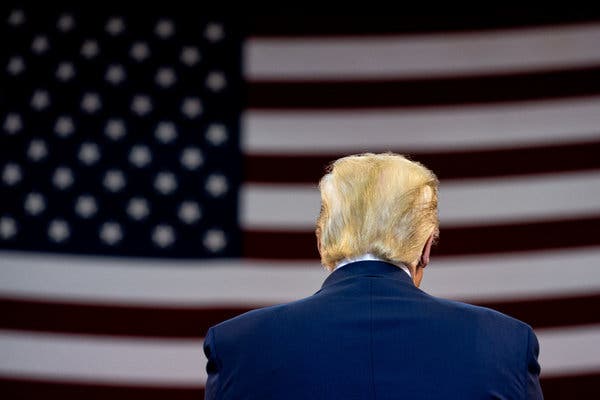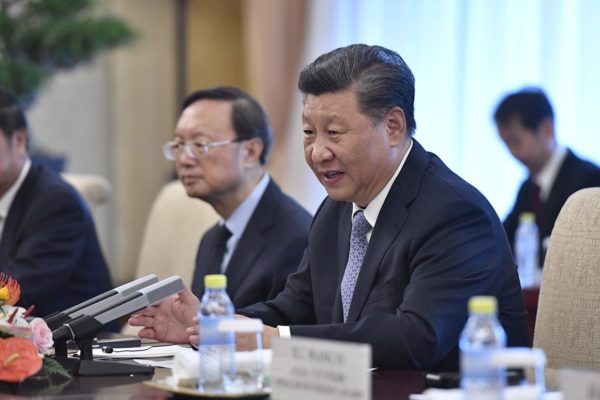Advertisement
The ad campaign from Priorities USA will begin appearing on television in Wisconsin next month, and in Florida, Pennsylvania and Michigan in March.

DES MOINES — One of the leading Democratic super PACs, Priorities USA, will spend $50 million more than previously announced against President Trump before the Democratic National Convention, with plans to make nearly $30 million in TV ad reservations in the coming days.
The super PAC, which had announced a $100 million campaign in early 2019, has increased its preconvention budget to $150 million, according to Guy Cecil, the committee’s chairman. “Donors are stepping up earlier than they have before,” he said.
The group will begin booking $30 million in television ads across four battleground states — Florida, Michigan, Pennsylvania and Wisconsin — later this week, as well as $40 million on digital platforms like YouTube, Hulu and Pandora. The first television ads are slated to appear in Wisconsin at the end of February, with ads in the other three states beginning to air in the middle or end of March. The Democratic convention will be held July 13 to 16 in Milwaukee.
“These are the four closest states in any way you want to measure,” Mr. Cecil said.
The television ad campaign will go live months earlier than the group’s first anti-Trump television ads did in 2016, when they began to air in May. Mr. Cecil said more bookings were coming. “I would emphasize ‘so far,’” he said of the reservations.
“We think that the preconvention period is really critical, especially if the primary moves into late spring or early summer,” he added. “You can’t let Donald Trump define the election, whether it’s online or on television.”
The Trump campaign ended 2019 with $102.7 million in cash on hand, and the president was already seeking to shape the perception of the Democratic candidates, including in a series of Twitter posts on Monday.
Priorities USA is one of three major groups now running anti-Trump ads. The others are the campaign of Michael R. Bloomberg, the former mayor of New York City, who has pledged to spend $100 million in anti-Trump digital ads, and a $75 million online anti-Trump campaign by Acronym, a nonprofit with an affiliated political action committee.
The combined $325 million eased some Democratic concerns from mid-2019 that the party was being — and would be — outpaced in online ad spending by Mr. Trump.
Priorities USA has been running anti-Trump messaging online since last summer, spending nearly $1.4 million just on Facebook in Pennsylvania in the last 90 days — making it, by far, the largest political advertiser in the state during that time, according to company data. The group’s ads hit Mr. Trump for a range of policies — cutting corporate taxes, raising health care costs or pushing his trade war — and sometimes promote news articles.
One ad currently running in Michigan, for instance, tells a story about the state’s shrinking share of the American economy. “Trump promised Michigan he’d bring back all the jobs, but his trade war has killed 300,000 so far,” it reads.
The group is not booking ads in every market in those four states. In Florida, for instance, Miami is missing, as are Tallahassee and Jacksonville. In Pennsylvania, the initial list of reservations does not include Philadelphia.
“Whenever you get into bigger markets, they just become less efficient,” Mr. Cecil said of TV ads, adding that there would be digital campaigns in those markets.
The most television money was being booked in Florida ($12.6 million) and its 29 electoral votes, the biggest bounty of any swing state. But Mr. Cecil said the three Midwestern states — each of which would have between $5.8 million and $6 million in initial reservations — were most likely to serve as the general election tipping point.
“These states are so close that when we do projection updates, the tipping-point state can change between Pennsylvania, Michigan and Wisconsin,” he said.
The single largest market for the Priorities USA television ads will be Tampa, Fla., with nearly $5 million. “Tampa, in almost every election for the last decade, has had the largest number of persuadable voters in Florida,” Mr. Cecil said.
But he warned against preconceptions about what those 2020 swing voters look like.
“When people hear ‘persuasion,’ they think white working class or Obama-Trump voters,” he said. “But in Florida, one out of every five Hispanic voters is a persuasion target.”



